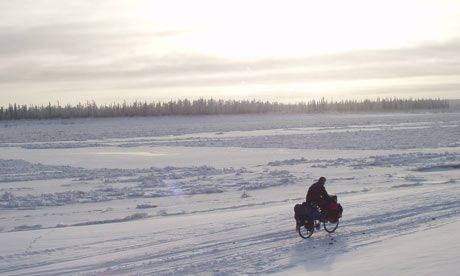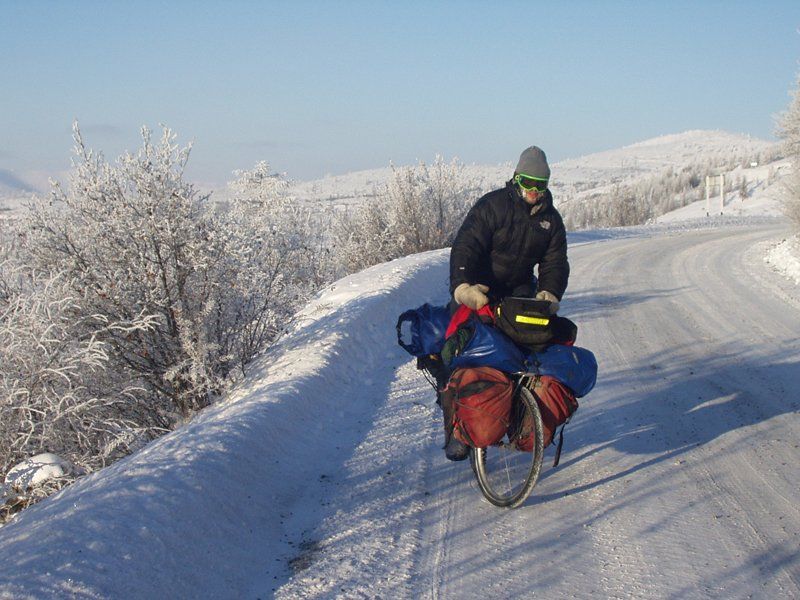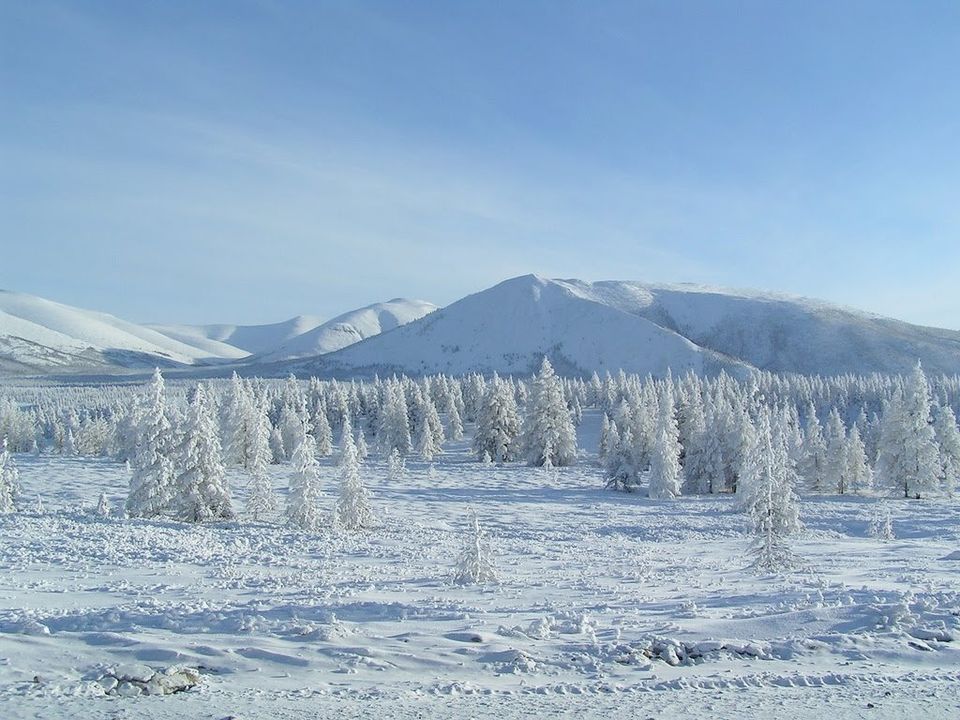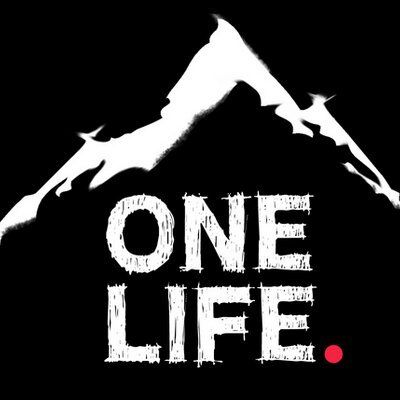Cycling Home From Siberia
In 2004, Rob Lilwall decided to leave his job as a geography teacher in England and flew with his bicycle for 18 hours to the far eastern edge of Siberia. He then spent the following three years trying to cycle back home again. We can’t fit his full storey here, so instead Rob has provided some tips for anyone else planning on cycling in the extreme cold.
To read a full account of his incredible journey buy his book, ‘Cycling Home from Siberia’ http://roblilwall.com/shop/ It’s a thoroughly enjoyable read and has received some great reviews from the press.
Who are you
Rob Lilwall
The Challenge
Cycling Home from Siberia
How long could did it take
3 Years
What was the distance
35,178
miles
How much did it cost
£8,000 / $13,000
Who was the organiser
Rob organized the trip himself

What was it like
Along the way Rob camped at minus forty degrees in Siberia, dragged his bike through jungles in Papua New Guinea, and braved the lonely passes of Afghanistan. He was robbed at gunpoint, caught malaria, and met his wife-to-be. There are more details of this astonishing trip on his website: http://roblilwall.com, but for now here are some tips for those of your who are planning a cycling trip in the extreme cold….
Cycling in the Extreme Cold
When we were preparing to start this trip, it was quite hard to find good information on cycling in the extreme cold (below minus twenty centigrade – all temperatures I refer to here are in centigrade).
The coldest temperature we had was minus 40 and most of these tips refer to surviving in this (please also note that we were fortunate to have almost NO WIND. The same temperatures with wind would be require considerably more clothing I think). In extreme cold weather, it is obviously a good idea to not cycle alone if you can help it.
One good possible source of further information and equipment reviews is www.icebike.com
– a North American website
(NB I am no polar explorer the following is just my observations as an amateur adventurer gleaned from my ride across Siberia in winter, and then modified somewhat after riding through Tibet in February 2007. Please see my website for more detail on all of this. http://roblilwall.com
You could probably use local Russian clothing and be fine, but make sure you have all the spare bike, tent and stove parts that you need before you get there.
Bike:
I used a Specialized Rockhopper (1997) steel frame mountain bike. Karrimor Panniers, bar bag, and Ortileb sacks piled on top of everything. The weight of all this was sometimes 65 kg, including up to a weeks supply of food and stove fuel.
A few additional comments:
-The metal parts of the bike had no problems, but plastic parts (toe clips, cable casing) became very brittle and broke/shattered below minus 20. Same with nozzle of bike pump invest in a metal one AND a spare.
- In Siberia I had normal MTB tyres and fell of the bike daily. For Tibet I arranged a pair of Schwalbe spiked tyres and I only fell off once in 3 months well worth the money if you are expecting icy roads.
-Patches seemed to come off punctures sometimes
-Gears. When it was a bit warmer and water gets onto your gear cables and then freezes, they get jammed nothing much you can do about that, but keep clearing off this ice then once it gets colder they will be ice free. I was nearly always in bottom gear on the front cog.

Clothes:
-
During the day, at minus 35 I wore:
Body: 3 thermals and then a windstopper fleece (if dry) or north face gortex jacket (if snowing)
Head: Balaclava and Wooly hat. Ski goggles. I grew a silly beard and if it was really cold put a head band across my nose.
Legs: Skimpy Ronhill tracksuit and baggy gortex over trousers
(oh, and guys, it is worth putting a spare glove or something down your crotch to stop your willy getting frostbite seriously !!)
Hands: We had poggies for our handlbars (down bags which you can put your hands into); thin layer gloves (always wear, even if fixing bike), and either gortex gloves or sheepskin gloves. My hands were fine as long as I kept moving.
Feet: This was the biggest problem, as so little blood goes to your feet when cycling eventually we went with 2 layers – the traditional Russian felt boots (Valenki) as under boots – and then Neos over boots on top (Valenki can be found easily in Siberia for about 10 GBP, Neos can be ordered online).
NB Your valenki are very liable to shrink! Both Al and I started off with nice big valenki with which we could wear 2 thick pairs of socks. After 10 days, we found we could only wear one pair of socks. After 20 days, one thin pair of socks and it was very hard to get the boots off! Eventually we had to cut all sorts of holes in the boots just to get them off our feet. I think most of the shrinking came about due to our feet sweating and then the boots drying out each time we stayed in a village and then shrinking. Possibly if you do not let your boots dry out (i.e., put them outside so they freeze at night), you would be ok (they quickly thaw in the morning). Alternatively, take a supply of plastic bags and put your feet in these -then only your socks get damp – I tried this in Tibet and it worked well.
I found feet the most stressful thing of all in Siberia. I frequently would have to jump off the bike and run with it, stamping my feet to try and get some feeling and blood back. Both Al and I lost toe nails, but thankfully no frostbite. For Tibet I invested in the expensive but amazing double layered Baffin boots (90 GBP) which were very snug and comfortable. Highly recommended in my opinion.
If the temperature is warmer, obviously shed layers as appropriate. It is also VERY IMPORTANT to manage your heat well in order to AVOID SWEATING. If you sweat, then it will never really evaporate.
Night/camping:
-In addition to daytime gear, for night time it is also vital to have a very warm puffa (down) jacket; some kind of big warm socks/slippers; a massive Russian fur hat; maybe some dry thermals in case you did sweat during the day; maybe a spare fleece.
- Thick sleeping bag and fleece liner
- 2 roll matts
- Tent we had a cheap tent a sponsor had donated which basically fell apart, so I would recommend investing in a proper mountain/expedition tent.
Beware the elastic in the poles becoming very loose (practice tightening this before you set off so you do not have to try and work it out on your first minus thirty night – as we did).
- In Tibet I had a decent mountain tent and it worked well, but coldest temperature was only about minus 25 at night. It would be interesting to see how this tent would fare in Siberia.
Stove:
- This was very important both for cooking and for melting snow to make water (so we could fill our camel backs and thermos). We had 2 MSR (petrol) stoves but had big problems with the stove pumps. We needed to regularly take them apart and fix them. Again, make sure you know how to take your stove apart and fix it. Carry a spare its your lifeline.
- Cigarette lighters don’t work usually and matches are quite dodgy too – so carry lots of them.
- In Tibet I used a Primus Omnifuel which worked brilliantly
Water and food :
- Water freezes almost instantly, so besides a good thermos (1 litre) we also had camel backs which we wore under our coats, so our body heat kept them mostly non frozen (you have to put the tube down your shirt to stop it freezing).
- Biscuits and chocolate is good for snacks, and you can keep the occasional pie in your jacket inside pocket to stop it freezing. (Al had the ingenious idea of filling our panniers with cheap Russian ice cream cones – it never melts and has lots of energy).
- At night we usually just cooked instant noodles and threw in tins of fatty stew for energy.
Camera:
Wear under your coat as otherwise it stops working in cold
Other:
Pee bottle, wide plastic rim, saves you having to leave the tent after dinner!
I am sure I have forgotten some things and as I said at the top, this is just my opinion- get other advice and be prepared to improvise. Please email me if you have any other questions. (roblilwall@gmail.com )
Good luck!

How should you / did you train
Rob mentions that he did not do a great deal of training, but would probably have benefited from cycling, time in the gym and practicing using his kit.
Any other useful hints / links
Rob’s website contains a huge amount of useful information about Rob and his adventures.
If you would like to read more about Rob, find out where he is next speaking, or learn more about his adventures click here: http://roblilwall.com
For more practical tips like those featured in this article click here:
View More Articles
Services List
-
Land This is a text area. Writing in paragraphs lets your visitor find what they are looking for quickly and easily. Edit the text in the list editor.
Land -
Water Expeditions This is a text area. Writing in paragraphs lets your visitor find what they are looking for quickly and easily. Edit the text in the list editor.
Water Expeditions -
Ice Expeditions This is a text area. Writing in paragraphs lets your visitor find what they are looking for quickly and easily. Edit the text in the list editor.
Ice Expeditions
